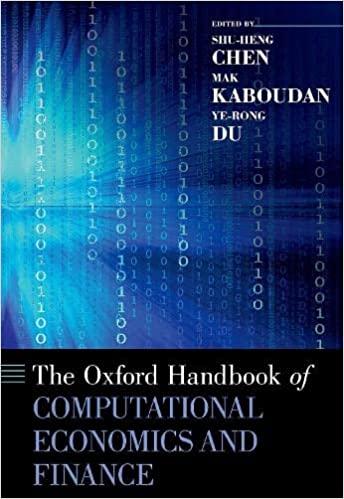Question
Question 1) The distribution of grades in an introductory finance class is normally distributed, with an expected grade of 71. If the standard deviation of
Question 1) The distribution of grades in an introductory finance class is normally distributed, with an expected grade of 71. If the standard deviation of grades is 14, in what range would you expect 68.26 percent of the grades to fall? (Round answer to 2 decimal places, e.g. 15.25. Hint: Think in terms of what the expected highest and lowest scores would be for 68.26% of the students taking the exam.) 68.26 percent of the grades should fall beween the ranges (lower end)____and (upper end)______. Question 2) Kate recently invested in real estate with the intention of selling the property one year from today. She has modeled the returns on that investment based on three economic scenarios. She believes that if the economy stays healthy, then her investment will generate a 30 percent return. However, if the economy softens, as predicted, the return will be 10 percent, while the return will be -25 percent if the economy slips into a recession. If the probabilities of the healthy, soft, and recessionary states are 0.3, 0.5, and 0.2, respectively, then what are the expected return and the standard deviation of the return on Kates investment? Expected return _____ Standard deviation ______ Question 3) Emmy is analyzing a two-stock portfolio that consists of a utility stock and a commodity stock. She knows that the return on the utility stock has a standard deviation of 40 percent and the return on the commodity stock has a standard deviation of 30 percent. However, she does not know the exact covariance in the returns of the two stocks. Emmy would like to plot the variance of the portfolio for each of three casescovariance of 0.065, 0, and 0.065in order to understand what the variance of the portfolio would be for a range of covariances. Do the calculation for all three cases (0.065, 0, and -0.065), assuming an equal proportion of each stock in the portfolio. Case 1, 1,2 = 0.065 Variance ______ Case 2, 1,2 = 0.0 Variance ______ Case 3, 1,2 = -0.065 Variance ______ Question 4) Assume the expected return on the market is 12 percent and the risk-free rate is 4 percent. What is the expected return for a stock with a beta equal to 1.30? What is the market risk premium? Question 5) David is going to purchase two stocks to form the initial holdings in his portfolio. Iron stock has an expected return of 23 percent, while Copper stock has an expected return of 29 percent. If David plans to invest 30 percent of his funds in Iron and the remainder in Copper, what will be the expected return from his portfolio? Expected return____ % What would the expected return of David's portfolio invests 70 percent of his funds in Iron stock? Expected return____ %
Step by Step Solution
There are 3 Steps involved in it
Step: 1

Get Instant Access to Expert-Tailored Solutions
See step-by-step solutions with expert insights and AI powered tools for academic success
Step: 2

Step: 3

Ace Your Homework with AI
Get the answers you need in no time with our AI-driven, step-by-step assistance
Get Started


